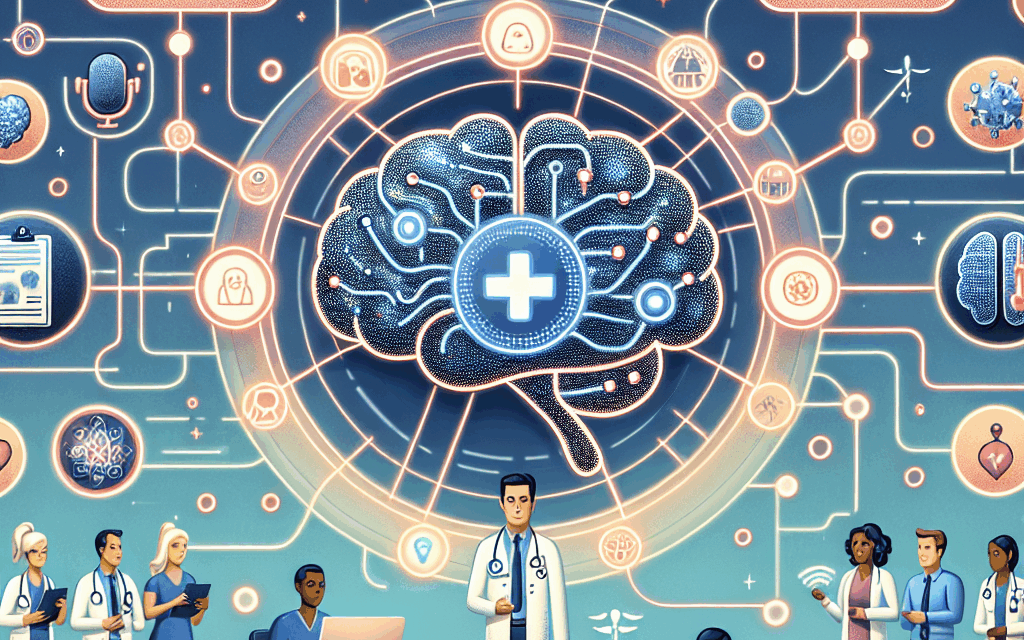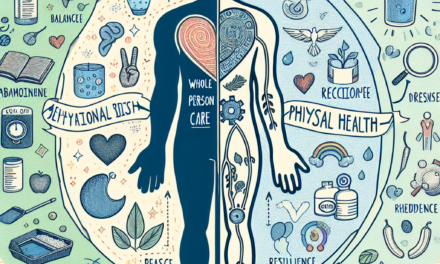Key Insights from AWS Summit: The Role of AI, Cloud, and Interoperability in Patient-Centric Care
The healthcare landscape is undergoing a significant transformation, driven by advancements in technology, particularly in artificial intelligence (AI), cloud computing, and interoperability. The AWS Summit, a premier event for cloud computing enthusiasts and professionals, has become a focal point for discussing these innovations and their implications for patient-centric care. This article delves into the key insights from the AWS Summit, exploring how AI, cloud technologies, and interoperability are reshaping healthcare delivery and enhancing patient experiences.
1. The Rise of AI in Healthcare
Artificial intelligence is revolutionizing healthcare by enabling more accurate diagnoses, personalized treatment plans, and improved patient outcomes. At the AWS Summit, several key themes emerged regarding the role of AI in patient-centric care.
1.1 Enhancing Diagnostic Accuracy
AI algorithms are increasingly being used to analyze medical images, pathology slides, and genetic data. For instance, deep learning models can identify patterns in radiology images that may be missed by human eyes. A study published in the journal *Nature* demonstrated that an AI system could outperform radiologists in detecting breast cancer in mammograms, achieving a reduction in false positives and false negatives.
Moreover, AI-driven diagnostic tools can process vast amounts of data quickly, allowing for real-time decision-making. For example, IBM Watson Health has developed AI systems that assist oncologists in identifying the most effective treatment options based on a patient’s unique genetic makeup and medical history.
1.2 Personalized Treatment Plans
AI is also playing a crucial role in creating personalized treatment plans tailored to individual patients. Machine learning algorithms can analyze data from various sources, including electronic health records (EHRs), wearable devices, and genomic data, to recommend treatments that are more likely to be effective for specific patients.
For instance, Tempus, a technology company specializing in precision medicine, uses AI to analyze clinical and molecular data to help oncologists make informed decisions about cancer treatment. By leveraging AI, healthcare providers can move away from a one-size-fits-all approach and offer more targeted therapies that improve patient outcomes.
1.3 Predictive Analytics for Proactive Care
Predictive analytics powered by AI can help healthcare providers identify at-risk patients before they require acute care. By analyzing historical data and identifying patterns, AI can predict which patients are likely to develop chronic conditions or experience complications.
For example, Mount Sinai Health System in New York has implemented an AI-driven predictive analytics tool that identifies patients at risk of hospital readmission. By intervening early, healthcare providers can implement preventive measures, ultimately reducing hospital stays and improving patient satisfaction.
1.4 AI in Drug Discovery
The drug discovery process is notoriously lengthy and expensive. However, AI is streamlining this process by identifying potential drug candidates more efficiently. Companies like Atomwise use AI algorithms to predict how different compounds will interact with specific biological targets, significantly reducing the time and cost associated with drug development.
In a notable case, Atomwise collaborated with researchers at the University of Toronto to identify potential treatments for Ebola. The AI system screened millions of compounds in a matter of days, leading to the identification of promising candidates that were subsequently tested in the lab.
1.5 Ethical Considerations and Challenges
While the potential of AI in healthcare is immense, it also raises ethical considerations. Issues such as data privacy, algorithmic bias, and the need for transparency in AI decision-making processes must be addressed. The AWS Summit highlighted the importance of developing ethical frameworks and guidelines to ensure that AI technologies are used responsibly in healthcare.
For instance, the American Medical Association (AMA) has called for the establishment of ethical standards for AI in medicine, emphasizing the need for accountability and transparency in AI algorithms. As healthcare organizations adopt AI technologies, they must prioritize ethical considerations to build trust among patients and providers.
2. Cloud Computing: The Backbone of Modern Healthcare
Cloud computing has emerged as a critical enabler of digital transformation in healthcare. The AWS Summit showcased how cloud technologies are facilitating data storage, analysis, and sharing, ultimately leading to improved patient care.
2.1 Scalability and Flexibility
One of the primary advantages of cloud computing is its scalability. Healthcare organizations can easily scale their IT infrastructure to accommodate growing data needs without significant upfront investments. This flexibility is particularly important in a field where data generation is increasing exponentially.
For example, during the COVID-19 pandemic, many healthcare providers turned to cloud solutions to manage surges in patient data. By leveraging cloud services, organizations like the Mayo Clinic were able to quickly adapt their IT infrastructure to support telehealth services and remote patient monitoring.
2.2 Enhanced Data Security
Data security is a paramount concern in healthcare, given the sensitive nature of patient information. Cloud providers like AWS invest heavily in security measures to protect data from breaches and unauthorized access. The AWS Summit highlighted the importance of compliance with regulations such as HIPAA (Health Insurance Portability and Accountability Act) and GDPR (General Data Protection Regulation) in ensuring data security.
For instance, AWS offers a range of security features, including encryption, access controls, and monitoring tools, to help healthcare organizations safeguard patient data. By utilizing these features, organizations can enhance their security posture and build trust with patients.
2.3 Facilitating Collaboration and Data Sharing
Cloud computing enables seamless collaboration among healthcare providers, researchers, and patients. By storing data in the cloud, organizations can share information more easily, leading to improved care coordination and better patient outcomes.
For example, the Health Information Exchange (HIE) initiatives across various states leverage cloud technologies to facilitate data sharing among different healthcare entities. This interoperability allows providers to access a patient’s complete medical history, leading to more informed decision-making and reduced duplication of tests.
2.4 Supporting Telehealth and Remote Monitoring
The rise of telehealth has been accelerated by cloud computing, allowing healthcare providers to deliver care remotely. The AWS Summit showcased various telehealth solutions that leverage cloud technologies to connect patients with providers, regardless of location.
For instance, Teladoc Health, a leading telehealth provider, utilizes cloud infrastructure to support its virtual care platform. By leveraging cloud technologies, Teladoc can offer a range of services, including video consultations, remote monitoring, and mental health support, all while ensuring data security and compliance.
2.5 Cost Efficiency and Resource Optimization
Cloud computing can lead to significant cost savings for healthcare organizations. By moving to the cloud, organizations can reduce the need for on-premises infrastructure, leading to lower maintenance costs and improved resource allocation.
For example, the Cleveland Clinic transitioned to a cloud-based infrastructure, resulting in a 30% reduction in IT costs. This cost efficiency allows healthcare organizations to allocate more resources toward patient care and innovation.
3. Interoperability: Breaking Down Data Silos
Interoperability is a critical component of patient-centric care, enabling seamless data exchange among different healthcare systems. The AWS Summit emphasized the importance of interoperability in improving care coordination and enhancing patient experiences.
3.1 The Importance of Data Interoperability
Data interoperability refers to the ability of different healthcare systems to communicate and exchange information effectively. This is essential for providing comprehensive care, as patients often receive treatment from multiple providers across various settings.
For instance, a patient with chronic conditions may see specialists, primary care physicians, and therapists. If these providers cannot share information easily, it can lead to fragmented care and poor health outcomes. Interoperability ensures that all providers have access to the same information, leading to more coordinated and effective care.
3.2 Standards and Frameworks for Interoperability
To achieve interoperability, healthcare organizations must adopt standardized data formats and protocols. The Fast Healthcare Interoperability Resources (FHIR) standard, developed by Health Level Seven International (HL7), is gaining traction as a framework for enabling data exchange among different systems.
At the AWS Summit, several organizations shared their experiences implementing FHIR-based solutions. For example, the University of California, San Francisco (UCSF) has adopted FHIR to facilitate data sharing among its various healthcare applications, improving care coordination and patient engagement.
3.3 Overcoming Challenges to Interoperability
Despite the benefits of interoperability, several challenges remain. Data privacy concerns, varying data standards, and resistance to change among healthcare providers can hinder progress. The AWS Summit highlighted the need for collaboration among stakeholders to address these challenges and promote interoperability.
For instance, the Office of the National Coordinator for Health Information Technology (ONC) has launched initiatives to promote interoperability and data sharing among healthcare organizations. By fostering collaboration and providing resources, ONC aims to create a more interconnected healthcare ecosystem.
3.4 Case Studies in Interoperability
Several healthcare organizations have successfully implemented interoperability solutions, leading to improved patient care. For example, the CommonWell Health Alliance is a collaborative effort among various healthcare stakeholders to enable data sharing across different systems. By leveraging cloud technologies and standardized protocols, CommonWell has facilitated data exchange for millions of patients, improving care coordination and outcomes.
Another example is the Epic Systems Corporation, which has developed interoperability solutions that allow its EHR system to communicate with other systems. By enabling data exchange, Epic has helped healthcare organizations improve care coordination and reduce duplication of services.
3.5 The Future of Interoperability in Healthcare
The future of interoperability in healthcare looks promising, with ongoing efforts to develop standardized protocols and frameworks. As more organizations adopt cloud-based solutions and embrace data sharing, the potential for improved patient care will continue to grow.
At the AWS Summit, experts emphasized the importance of fostering a culture of collaboration among healthcare providers, technology vendors, and policymakers to drive interoperability forward. By working together, stakeholders can create a more connected healthcare ecosystem that prioritizes patient-centric care.
4. Patient Engagement and Empowerment
Patient engagement is a crucial aspect of patient-centric care, and technology plays a significant role in empowering patients to take an active role in their health. The AWS Summit highlighted various strategies and tools that enhance patient engagement and improve health outcomes.
4.1 The Role of Patient Portals
Patient portals are online platforms that allow patients to access their health information, communicate with providers, and manage appointments. These portals empower patients by giving them greater control over their healthcare journey.
For example, the MyChart patient portal developed by Epic Systems enables patients to view their medical records, lab results, and medication lists. By providing easy access to this information, MyChart encourages patients to take an active role in their health management.
4.2 Mobile Health Applications
Mobile health (mHealth) applications are another powerful tool for enhancing patient engagement. These apps allow patients to track their health metrics, receive reminders for medication, and access educational resources.
For instance, the MyFitnessPal app enables users to track their diet and exercise, promoting healthier lifestyle choices. By leveraging technology, mHealth apps empower patients to make informed decisions about their health and well-being.
4.3 Telehealth and Remote Monitoring
Telehealth services have gained popularity in recent years, particularly during the COVID-19 pandemic. By enabling virtual consultations, telehealth allows patients to receive care from the comfort of their homes, reducing barriers to access.
Remote monitoring technologies, such as wearable devices, further enhance patient engagement by allowing individuals to track their health metrics in real-time. For example, devices like the Apple Watch can monitor heart rate, activity levels, and even detect irregular heart rhythms, empowering patients to take charge of their health.
4.4 Educational Resources and Support
Providing patients with educational resources is essential for promoting engagement and empowerment. Healthcare organizations can leverage technology to deliver personalized educational materials that address patients’ specific needs and concerns.
For instance, the American Heart Association offers an online platform that provides resources on heart health, including articles, videos, and interactive tools. By equipping patients with knowledge, healthcare organizations can foster a sense of ownership over their health.
4.5 Building Trust and Communication
Effective communication between patients and healthcare providers is vital for fostering trust and engagement. Technology can facilitate communication through secure messaging systems, video consultations, and educational webinars.
At the AWS Summit, experts emphasized the importance of building strong relationships between patients and providers. By prioritizing communication and transparency, healthcare organizations can enhance patient engagement and improve overall satisfaction.
5. The Future of Patient-Centric Care
The insights from the AWS Summit underscore the transformative potential of AI, cloud computing, and interoperability in shaping the future of patient-centric care. As healthcare organizations continue to embrace these technologies, several trends are likely to emerge.
5.1 Increased Adoption of AI Technologies
The adoption of AI technologies in healthcare is expected to accelerate in the coming years. As organizations recognize the benefits of AI in improving diagnostic accuracy, personalizing treatment plans, and enhancing patient engagement, investment in AI solutions will likely increase.
For instance, the global AI in healthcare market is projected to reach $45.2 billion by 2026, growing at a CAGR of 44.9% from 2021 to 2026. This growth will drive innovation and lead to the development of new AI applications that further enhance patient care.
5.2 Continued Emphasis on Cloud Computing
Cloud computing will remain a cornerstone of digital transformation in healthcare. As organizations seek to improve scalability, security, and collaboration, the demand for cloud-based solutions will continue to rise.
According to a report by MarketsandMarkets, the global healthcare cloud computing market is expected to reach $64.7 billion by 2025, growing at a CAGR of 13.8%. This growth will enable healthcare organizations to leverage cloud technologies to enhance patient care and streamline operations.
5.3 Advancements in Interoperability
The push for interoperability will continue to gain momentum as healthcare organizations recognize its importance in improving care coordination. Ongoing efforts to develop standardized protocols and frameworks will facilitate data sharing and collaboration among providers.
As interoperability improves, patients will benefit from more coordinated care and better health outcomes. The future of healthcare will be characterized by seamless data exchange, enabling providers to access comprehensive patient information at the point of care.
5.4 Empowering Patients through Technology
The trend toward patient empowerment will continue to grow as technology enables individuals to take an active role in their health. Patient portals, mobile health applications, and telehealth services will become increasingly prevalent, providing patients with the tools they need to manage their health effectively.
As patients become more engaged in their healthcare journeys, healthcare organizations will need to prioritize communication and support to foster trust and collaboration.
5.5 A Focus on Ethical Considerations
As AI and other technologies become more integrated into healthcare, ethical considerations will take center stage. Healthcare organizations must prioritize transparency, accountability, and data privacy to build trust among patients and providers.
The AWS Summit highlighted the importance of developing ethical frameworks for AI in healthcare, ensuring that these technologies are used responsibly and equitably. By addressing ethical concerns, healthcare organizations can harness the full potential of technology while prioritizing patient welfare.
Conclusion
The AWS Summit provided valuable insights into the transformative role of AI, cloud computing, and interoperability in patient-centric care. As healthcare organizations continue to embrace these technologies, they have the potential to enhance diagnostic accuracy, personalize treatment plans, and improve patient engagement.
Key takeaways from the summit include:
- The rise of AI is revolutionizing healthcare by improving diagnostic accuracy and enabling personalized treatment plans.
- Cloud computing serves as the backbone of modern healthcare, providing scalability, security, and collaboration opportunities.
- Interoperability is essential for breaking down data silos and improving care coordination among providers.
- Patient engagement is crucial for fostering trust and empowering individuals to take an active role in their health.
- Ethical considerations must be prioritized as technology continues to shape the future of healthcare.
As we look to the future, the integration of AI, cloud technologies, and interoperability will play a pivotal role in creating a more patient-centric healthcare system that prioritizes quality care and improved outcomes for all individuals.





